Pop veteran Sting, celebrity survival expert Bear Grylls and 1,400 Apple office workers will soon be neighbours – living and working alongside each other at Battersea Power Station.
The £9bn project to revamp the Grade II listed building – more than it cost to build the stadiums and stage the 2012 London Olympics – is the centrepiece of a mile-long development of offices and apartment towers on the south bank of the Thames stretching from Vauxhall to Chelsea bridge.
After four years of construction, the development is now starting to take shape and the first 100 residents have just moved in to a luxury apartment complex alongside the main building, called Circus West Village. And for the first time in 90 years the power station’s riverfront, with a new piazza and parkland, is now accessible to all.
The former power plant won’t open its doors to the public for shopping and leisure until 2020, when a new tube station, called Battersea Power Station, comes online to whisk workers, visitors and the development’s well-heeled residents into the West End or the City in less than 15 minutes.
A glass lift is to be built to take visitors to a viewing platform atop the power station’s landmark white chimneys, where they will have sweeping views across the river from a height of more than 100m (330ft).

The power station has lain empty since it was decommissioned in 1983. Seven separate plans – including turning the power station into a theme park, giant shopping mall or football stadium – fell apart before a Malaysian consortium bought the 17-hectare (42-acre) site for £400m in 2012.
The developers are now building at least 1.25m sq ft of office space and 4,239 swanky new homes. It is one of the biggest building sites in Europe, employing 3,000 construction workers. The project is scheduled for completion in 2026.
The Guardian gained a sneak preview last week of the work under way at the former coal-fired power station, which used to supply one-fifth of London’s electricity.
Most of the scaffolding erected inside the building – the biggest brick construction in Europe and vast enough to hold both St Paul’s Cathedral and Trafalgar Square – has now been removed, with work underway to refurbish the original 1930s features; the art deco balconies, windows and giant fluted pilasters in light grey marble are all being restored.
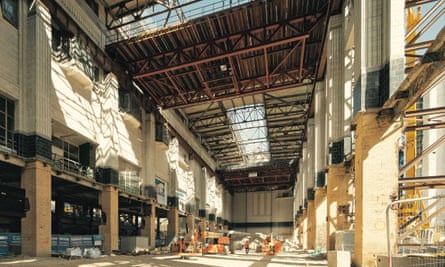
The original chimneys have been replaced with replicas. Two will even have steam coming out of them, from a new gas-powered energy centre.
Inside, the two turbine halls – one built in the 1930s with bronze doors, marble floors and staircases, the other a more austere 1950s construction – will eventually be lined with shops, restaurants, cafes and cinemas.
The biggest tenant will be Apple, whose decision to locate its new European HQ in London was seen as a huge boost for the UK after the Brexit vote. The US tech giant will move 1,400 staff into five floors of the former boiler house in 2021.

A new concert venue for 2,000 people is also in the works, while the former control room A will be marketed as a cultural venue.
Most of the 253 luxury apartments atop the power station have already been sold off-plan. Studio flats – with no separate bedroom – started at £800,000. One-bed flats started at £1m while four-bedroomed family apartments cost at least £4m.
The three penthouses have yet to be priced, although the rumoured £25m-£30m price tag may have to be scaled back as demand for high-end property in the capital dips.
To the south of the power station, a cluster of sculptural blocks designed by US architect Frank Gehry and Britain’s Foster + Partners – including a titanium-clad building called The Flower – will line a new high street, called the Electric Boulevard. This is where Sting and his wife have invested. Studio flats there started at £495,000, rising to £3.2m for a four-bedroom apartment when put on sale in 2014.

Bear Grylls, the TV adventurer, has bought an apartment where he plans to live with his wife and three sons. He said the family had lived in Battersea for many years and “didn’t just want a run-of-the-mill townhouse or riverside development … It was our chance to own a little bit of history that we could pass on down through the family.”
About 85% of the 2,481 marketed homes have been sold so far, although the developers have recently been affected by the slump in the luxury home market. Some apartments, they said, would now be downsized . They might also replace planned apartments with up to 1m sq ft of office space, about twice the floorspace of 30 St Mary Axe in the City, better known as The Gherkin.
The overall development includes 636 affordable homes, just 15% of the total . None are located in the actual power station. The number is far less than is usually demanded but the local council Wandsworth agreed to a lower proportion because the development will improve the area and the developer is contributing to the tube extension. Local residents will get an average market rent discount of 40%.
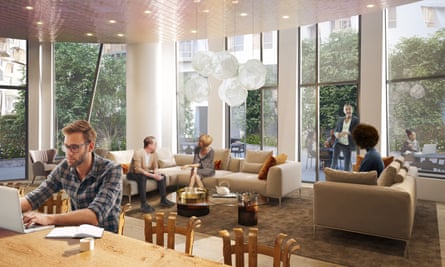
Ravi Govindia, the Conservative leader of Wandsworth council, has praised the project. He said it “will deliver hundreds of new homes at prices that low and middle-income households can genuinely afford ... without a single penny of taxpayers’ subsidy”.
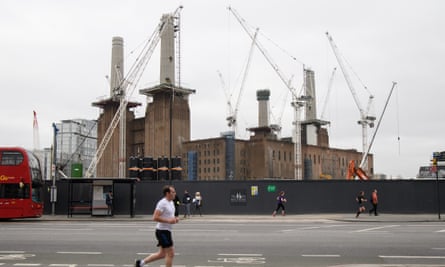
Some locals, however, have strongly criticised the project, questioning the social and economic benefits to the area.
Keith Garner, a local architect and member of the Battersea Power Station Community Group, described the power station plan as “soulless and generic”. He wanted more affordable homes included, and to see cultural and educational institutions included – like an annexe to the South Kensington museums or top-level sports facilities such as an Olympic-size pool.
However, Rob Tincknell, who runs the Battersea Power Station Development Company, says the luxury homes are necessary to pay for the former power plant’s restoration.
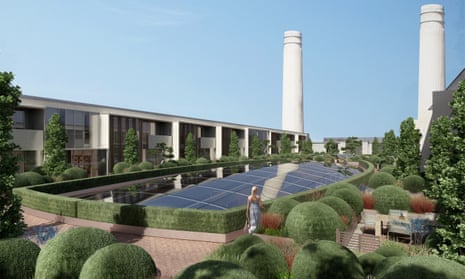


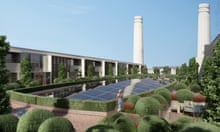

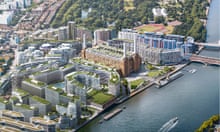

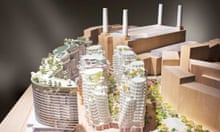
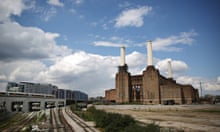
Comments (…)
Sign in or create your Guardian account to join the discussion